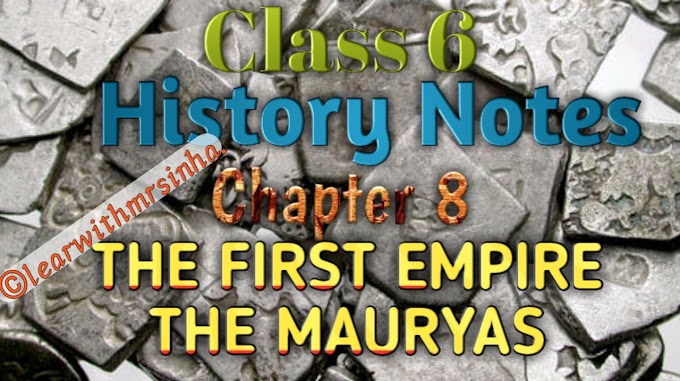History is the study of the past. It is divided into pre-history (no written records available), proto-history (very few written records available) and history (written records available in plenty).
Que. Why dates are important to history?
Ans :- Dates are important to history, because they help to show cause and effect relationship between events.
Periodisation
Periodisation :- The facility to divide the past into block of time.
The demarcation of time into different periods of the past is called periodisation.
James Mill (British Historian) proposed the periodisation of Indian history as Hindu, Muslim and British periods. According to James Mill, British rule was a birth of new India.
He divided the history on the basis of religion.
Another historians divide the history into three periods, for instance
1. Ancient
2. Medieval
3. Modern
Note :- The period of Ancient and Medieval history recognised as dark age. Because the absence of Scientific and Technology’s development.
Colonisation :- The subjugation of one country by another leading to political, economic, social and cultural change is called colonisation.
It involves dominating the original inhabitants of the area.
Source of Information of Colonisation Period.
The British maintained strict control and made sure that all administrative actions were well documented. They believe to conserve the evidence and record, which lead to the culture of notes and memos.
- Administrative Records
- Archaeological Source and Museum Records
- Survey and Map
- Other Source like :-
Literary Source
Paintings
Monuments and heritage Buildings
Photographs, Films, Newspapers and Radio Broadcasts
Oral Evidence
Note :- Before the advent of printing, all documents were copied out by calligraphists. When printing began in India, the documents could be printed and these were the preserved.
We come to know about the trading strategy of the British with the help of Trade record of the East India Company.
The National Achieves of India New Delhi
Imperial Record Department Kolkata
The Geological Survey of India Kolkata
The National Museum of India New Delhi
Survey :- Survey means to study or investigate important facts and figures regarding a particular subject for acquiring additional and specific information.
British surveyed the whole country and mapped. And had surveys done on all important topics from flora and fauna to the history of a place.
A census was carried out after every ten years. They were able to get information on the – population, caste, religions and occupation of the people.
The survey of India was set up in 1767 in Dehradun. The surveyors had an onerous task of exploring the unknown. Bit by bit the country was surveyed by the painstaking efforts of a distinguished line of surveyors such as Mr Lambton and Sir George Everest.
Official Records give information inly on what the British did; their interests, their actions and their views. They do not tell about the common people.
To get information about the common peoples we require Other Sources (like Literature, Paintings, Monuments, Films etc.) beside official records.
Literature Source
Books Author
- Biography of Mahatma Gandhi Willian Shirer
- Anandmath Bankim Chandra Chatterjee
- Neel Durpan Dinbandhu Mitra
- Bharat Durdasa Bhartendu Harishchandra
- Nation in the Making Surendra Nath Banerjee
- Poverty and Un-British Rule in India Dadabhai Naoroji
- Shiyar-ul-Mutakherin Ghulam Hussain Tabatabai
- Diary of Ananda Ranga Pillai
Note:- The book “Poverty and Un-British Rule in India” gives a detailed account of how wealth from India was drained away to Britain.
The Printing Press had been invented in the 15th Century which resulted in mass printing of newspaper and magazines and they were circulated in Hindi and various languages. These are :-
Mahratta English
Kesari Marathi
Bande Matram English
Yugantar Bengali
Painter and Paintings
Tilly Kettle :- A British artist who had visited India in the 18th century.
Works :- Painting of Sati and other Indian Ceremonies, Portrait of Muhammad Ali khan, The Nawab of Arcot and Shuj-ud-Daula, The Nawab of Awadh.
Arthur William Devis :- His most famous painting “Lord Cornwallis Receiving the Sons of Tipu as Hostage”.
Work :- Painted a painting of Indians engaged in their art and crafts.
John Zoffany :- has completed two famous paintings capturing the life in Lucknow.
Other Famous Paintings :- Tiger Hunting in the East Indies, A Battle Piece against Haider Ali, The Death of the Royal Tiger and The Embassy of Hyderabad to Culcutta.
Monuments and Heritage Building built during British time.
Parliament House New Delhi
Rashtrapati Bhawan New Delhi
India Gate New Delhi
Fort St. George Chennai
War Memorial Hall Chennai
Shivaji Terminus Mumbai
Bombay High Court Mumbai
The Prince of Wales Museum Mumbai
General Post Office of Bombay Mumbai
Gateway of India Mumbai
Victoria Memorial Kolkata
Fort William Kolkata
General Post Office Kolkata
National Library Kolkata
Note :- The Current Residence of President of India was the residence of the British Viceroy of India.
The Shivaji Terminus is the Railway Station of Mumbai, later known as Victoria Terminus.
Films which are useful in reconstructing history are:-
Gandhi by Richard Attenborough. And Many Documentaries are also available.
= Lagaa (about the economic exploitation of India by British), Shatranj ke khiladi, Shaheed Bhagat Singh and Mangal Pandey (freedom struggle)
= Gadar (communal riots during the time of partition)
Radio Broadcast Tape Song:- Mera Rang De Basanti chola.
**********
Monopoly :- Complete control of trade of goods or services
Liberation :- To free a country or a person from any bondage
Artefact :- Relic or Object of historical importance found in excavation
Periodisation :- Demarcation of time into different periods of the past
Archives :- Is an accumulation of historical records or the physical place they are located
Survey :- To study or investigate important facts and figures regarding a particular subject
Sati :- The Hindu custom of Widow throwing herself on to her husband’s funeral pyre







2 Comments
Wow...so much knowledge..in a very simple and rememberable..tone..thanx for sharing with us...
ReplyDeleteHere you will get lot of things. So stay connected and Subscribe us.
Delete